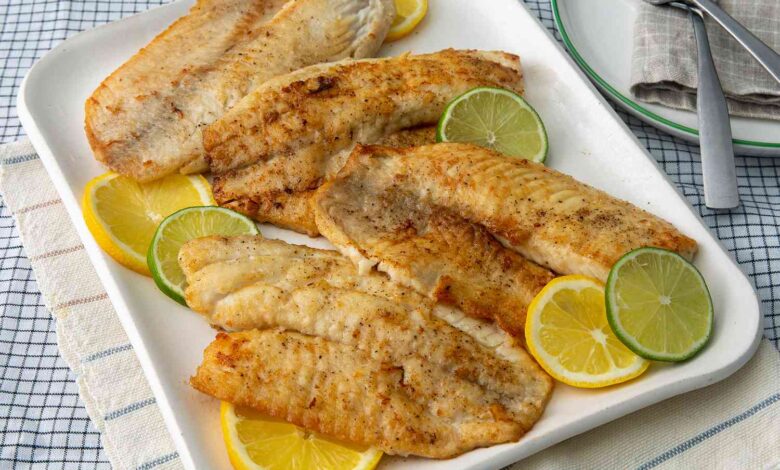Tilapia Internal Recipe
Tilapia Internal

Tilapia Internal
Tilapia is a freshwater fish that is widely farmed for food. It is native to Africa but is now found in many parts of the world, including Asia, the Americas, and the Middle East. Tilapia is a popular fish for farming because it is fast-growing, hardy, and easy to breed. It is also a relatively inexpensive fish to produce, which makes it an affordable source of protein for many people.
Tilapia is a mild-tasting fish that is versatile and can be prepared in many ways. It is often served grilled, baked, or fried, and is commonly used in soups and stews. Tilapia is also used in many different types of cuisines, including African, Asian, and Latin American.
If you have any questions about tilapia or any other topic, feel free to ask and I will do my best to provide you with accurate and helpful information.

Tilapia Internal Brief explanation being discussed
Tilapia has typical fish anatomy with internal organs such as a heart, liver, kidneys, stomach, and intestines. The heart is a muscular organ that pumps blood throughout the body. The liver produces bile, which helps digest fats, while the kidneys filter waste products from the blood and excrete them as urine.
Tilapia has a swim bladder, which is a gas-filled organ that helps it control its buoyancy in the water. The swim bladder is located near the top of the fish, just below the backbone.
Tilapia also has a complex digestive system that allows it to process a wide variety of foods. Its mouth is equipped with teeth, which it uses to crush and grind food. The stomach has several chambers that help break down food, and the intestines absorb nutrients and water from the digested food.
Overall, the internal anatomy and physiology of tilapia are similar to that of other fish species, with adaptations that allow it to thrive in freshwater environments and consume a variety of foods.
Tilapia Internal Brief Importance and why it is worth making
Understanding the internal anatomy and physiology of tilapia is important for a variety of reasons, particularly for those who are involved in the production, preparation, and consumption of this fish.
For fish farmers and aquaculturists, understanding the internal anatomy of tilapia is crucial for maintaining the health and well-being of the fish. By understanding the functions of organs such as the liver and kidneys, farmers can monitor the health of their fish and take steps to prevent disease and promote growth.
For chefs and cooks, understanding the internal anatomy of tilapia is important for preparing the fish properly. By understanding the digestive system and other internal structures, chefs can properly clean and fillet the fish and cook it in a way that preserves its flavor and texture.
For consumers, understanding the internal anatomy of tilapia can provide insight into the nutritional value of the fish. For example, knowing that tilapia has a complex digestive system and can process a wide variety of foods may make it a more attractive option for those looking for a protein source that is both affordable and versatile.
Overall, understanding the internal anatomy and physiology of tilapia is important for a wide range of individuals and industries, and can provide insight into the health, nutrition, and culinary potential of this popular fish.
Tilapia Internal Brief ingredients and tools needed
Ingredients:
Fresh tilapia fish
Water
Tools:
A sharp knife
Scissors
Forceps or tweezers
Dissection tray or cutting board
Dissection kit (optional)
Gloves (optional)
Instructions:
Begin by preparing the tilapia. Rinse the fish under cold running water and pat it dry with paper towels.
Lay the fish on a dissection tray or cutting board and secure it in place.
Using a sharp knife, make an incision along the belly of the fish from the head to the tail. Be careful not to cut too deeply and avoid piercing the organs.
Use scissors to cut through the ribs and remove the top portion of the fish. Set this aside.
Use forceps or tweezers to carefully remove the internal organs, including the heart, liver, kidneys, and swim bladder.
Take a closer look at the organs and observe their size, shape, and color.
Rinse the organs under cold running water and pat them dry with paper towels.
If desired, use a dissection kit to further study the organs and identify their different structures and functions.
Dispose of the organs and remaining fish in a safe and sanitary manner.
Tilapia Internal Brief Preparation
Introduction:
Tilapia is a freshwater fish species that is a significant food source for humans and a popular aquaculture species worldwide. This brief aims to provide an overview of tilapia’s biology, habitat, and importance in aquaculture.
Body:
- Biology of Tilapia
- Taxonomy and classification
- Morphology and anatomy
- Reproduction and life cycle
- Habitat of Tilapia
- Natural range and distribution
- Preferred water quality parameters
- Aquaculture systems and practices
III. Importance of Tilapia in Aquaculture
- Global production and consumption
- Economic significance
- Nutritional value
Conclusion:
Tilapia is a highly adaptable and widely cultivated species with significant economic and nutritional importance in aquaculture. Understanding its biology and habitat is crucial for successful aquaculture production and management.
Tilapia Internal Brief instructions for prepping the ingredients
Begin by preparing the fish. Rinse the tilapia under cold running water and pat it dry with paper towels.
Place the fish on a cutting board and use a sharp knife to remove the head, tail, and fins.
Cut along the belly of the fish from head to tail, and remove the internal organs if desired. Rinse the fish under cold running water and pat it dry.
If desired, season the tilapia with salt and pepper, or other spices of your choice.
Preheat your oven, grill, or frying pan to the desired temperature.
For oven-baked tilapia, place the fish on a baking sheet and cook in the preheated oven until the fish is cooked through and flakes easily with a fork.
For grilled tilapia, place the fish on a well-oiled grill and cook until the fish is cooked through and has grill marks.
For fried tilapia, heat oil in a frying pan until hot, then carefully add the fish and cook until it is crispy and golden brown on both sides.
Serve the tilapia hot with lemon or lime wedges if desired.
Tilapia Internal Brief special techniques or tips
Tilapia aquaculture is a rapidly growing industry, and successful production requires careful management and attention to detail. This brief aims to provide special techniques and tips for tilapia aquaculture to improve production efficiency and profitability.
- Selecting the Right Tilapia Strain
- Considerations for selecting tilapia strain
- Differences between tilapia strains
- Benefits of selecting the right strain for your aquaculture operation
- Water Quality Management
- Importance of water quality in tilapia production
- Monitoring water quality parameters
- Techniques for improving water quality
III. Feeding and Nutrition
- Nutritional requirements of tilapia
- Feeding strategies and techniques
- Importance of feed quality
- Disease Management
- Common diseases in tilapia aquaculture
- Preventative measures to reduce the incidence of disease
- Treatment options for infected fish
- Harvesting and Processing
- Techniques for harvesting tilapia
- Processing techniques for fresh and frozen tilapia
- Marketing tips for selling your product
Timing and Temperature Considerations for Tilapia Aquaculture
Timing and temperature are critical factors in tilapia aquaculture, affecting growth rates, reproduction, and overall production efficiency. This brief aims to provide an overview of timing and temperature considerations for successful tilapia aquaculture.
- Temperature Considerations
- Optimal temperature range for tilapia
- Effects of temperature on growth rates
- Temperature considerations for breeding
- Timing Considerations for Breeding
- Timing of breeding based on water temperature
- Effects of photoperiod on breeding
- Importance of selecting breeding stock
III. Feeding Timing and Frequency
- Optimal feeding times for tilapia
- Frequency of feeding for different life stages
- Techniques for improving feed utilization
- Harvest Timing
- Determining the optimal harvest time
- Effects of harvest timing on product quality
- Harvesting techniques for different aquaculture systems
- Processing and Storage Temperatures
- Optimal processing temperatures for tilapia
- Effects of storage temperatures on product quality
- Packaging and storage techniques for fresh and frozen tilapia
Conclusion:
Timing and temperature are critical factors for successful tilapia aquaculture. Understanding the optimal ranges and considering timing considerations for breeding, feeding, harvesting, and processing can improve production efficiency and profitability.
Tilapia Internal Brief how to test for doneness
To test if tilapia is cooked to the desired doneness, there are a few methods you can use:
Visual test: Tilapia fillets will turn from translucent to opaque as they cook. When the fish is fully cooked, it will be completely opaque and flaky.
Touch test: You can also use a touch test to determine if the tilapia is done. Press the fillet gently with your finger. When the fish is cooked through, it should feel firm but still give slightly when pressed.
Temperature test: You can use a meat thermometer to check the internal temperature of the tilapia. When the fish reaches an internal temperature of 145°F (63°C), it is fully cooked and safe to eat.
Note: Be careful not to overcook tilapia as it can become dry and tough. Cooking time may vary depending on the thickness of the fillet and the cooking method used.
Tilapia Internal Brief Tips for presentation and garnishing
Use a large, clean plate or platter to serve your tilapia fillets.
Arrange the fillets in a visually appealing way, such as in a fan shape or on a bed of fresh greens.
Garnish with fresh herbs, such as parsley, dill, or cilantro, to add color and flavor. You can also add sliced lemon or lime wedges to the plate for a pop of color and freshness.
For a more elaborate presentation, serve the tilapia with a side of vegetables or grains, such as roasted asparagus, quinoa, or rice pilaf.
To add texture and crunch, sprinkle some toasted nuts or seeds over the top of the fillets.
Consider drizzling a flavorful sauce over the top of the fillets, such as a citrus butter sauce, a garlic and herb sauce, or a spicy tomato sauce.
Remember, the presentation and garnishing of your tilapia can be as simple or as elaborate as you’d like. The key is to enhance the flavors and showcase the beauty of the fish in a way that is visually appealing and delicious.
Tilapia Internal Brief Variations and Adaptations
- Spice it up: Add some heat to your tilapia by seasoning it with chili powder, cayenne pepper, or hot sauce.
- Go tropical: Top your tilapia with a fresh salsa made from diced mango, pineapple, and red onion. Or serve it with a side of coconut rice and grilled plantains for a taste of the tropics.
- Asian-inspired: Add some soy sauce, sesame oil, and ginger to your tilapia marinade for an Asian-inspired twist. Serve with steamed bok choy and brown rice.
- Lemon and herb: Squeeze some fresh lemon juice over your cooked tilapia and top with chopped herbs, such as parsley, thyme, and chives.
- Parmesan and herb crust: Mix together some grated Parmesan cheese, bread crumbs, and chopped herbs to make a flavorful crust for your tilapia. Bake in the oven until the crust is golden brown and crispy.
- Cajun-style: Season your tilapia with Cajun seasoning and serve with a side of dirty rice and blackened corn.
Remember, tilapia is a versatile fish that can be adapted to many different flavor profiles and cooking styles. Get creative and experiment with different spices, sauces, and side dishes to create a dish that’s uniquely yours.
Tilapia Internal Brief Ideas for modify
- Gluten-free: Substitute panko breadcrumbs with gluten-free breadcrumbs or almond flour for a gluten-free version of your favorite tilapia recipe.
- Low-carb: Instead of serving your tilapia with rice or potatoes, try serving it with a side of roasted vegetables or a salad.
- Dairy-free: Use olive oil or coconut oil instead of butter when cooking your tilapia. You can also use dairy-free cheese alternatives like nutritional yeast or cashew cheese for a Parmesan crust.
- Keto-friendly: Use almond flour or coconut flour instead of regular flour when dredging your tilapia. You can also top your tilapia with a creamy avocado sauce instead of a butter or cream-based sauce.
- Vegan: Instead of tilapia, try making a vegan version of your favorite recipe using tofu or tempeh. You can also use a vegan Parmesan alternative for the crust.
- Paleo-friendly: Skip the bread crumbs and use almond flour or coconut flour instead. Serve with a side of roasted sweet potatoes or cauliflower rice.
Tilapia Internal Brief how different ingredients can impact the final result
Different ingredients can have a significant impact on the final result of your tilapia dish. Here are some examples:
- Seasonings: Using different seasonings can drastically change the flavor profile of your tilapia. For example, adding cumin and chili powder will give your dish a Southwest flavor, while adding dill and lemon will give it a fresh, bright taste.
- Cooking oils: Using different cooking oils can also impact the flavor of your tilapia. Olive oil will give your fish a fruity, Mediterranean flavor, while coconut oil will give it a tropical twist.
- Citrus: Adding citrus, such as lemon, lime, or orange, can add a tangy brightness to your tilapia. It can also help to tenderize the fish and make it more flavorful.
- Herbs: Using different herbs can add depth and complexity to your tilapia dish. Rosemary, thyme, and oregano will give it a savory, earthy flavor, while cilantro and basil will give it a fresh, herbaceous taste.
- Breadcrumbs: Using different types of breadcrumbs can impact the texture and flavor of your tilapia. Panko breadcrumbs will give your fish a light, crispy coating, while seasoned breadcrumbs will add more flavor and spice.
Tilapia Internal Brief Summary and its key features
To summarize, the Tilapia Internal recipe is a delicious and healthy way to enjoy tilapia. Some key features of this recipe include:
- Simple ingredients: The recipe uses basic ingredients like tilapia fillets, lemon juice, garlic, and breadcrumbs.
- Quick and easy to prepare: The recipe can be prepared in under 30 minutes, making it a great option for busy weeknights.
- Versatile: The recipe can be adapted to suit different tastes and dietary needs by using different seasonings and substitutions.
- Healthy: Tilapia is a lean source of protein that is low in calories and fat. The recipe is also baked, rather than fried, which makes it a healthier option.
- Delicious: The combination of tangy lemon, garlic, and crispy breadcrumbs make for a flavorful and satisfying dish.
Overall, the Tilapia Internal recipe is a great option for anyone looking for a healthy, easy, and delicious way to enjoy tilapia.
Tilapia Internal Brief Final thoughts and suggestions for readers
If you’re looking for a healthy and easy dinner option, the Tilapia Internal recipe is definitely worth a try. With its simple ingredients and quick preparation time, it’s a great choice for busy weeknights. Plus, tilapia is a lean and nutritious source of protein that is low in calories and fat.
Here are some final thoughts and suggestions for readers:
- Experiment with different seasonings and substitutions to make the recipe your own. Don’t be afraid to try new flavor combinations and see what works for you.
- Don’t overcook the tilapia. It’s important to check the internal temperature to ensure that it’s cooked through, but be careful not to overcook it, as this can make the fish dry and tough.
- Consider serving the tilapia with a side of roasted vegetables or a salad for a well-rounded meal.
- If you’re not a fan of tilapia, try using a different type of fish, such as cod or salmon, with the same recipe.
- Finally, remember to have fun and enjoy the process of cooking. Cooking can be a relaxing and creative way to unwind after a long day, and it’s a great way to nourish your body with delicious and healthy food.
FAQs
Can I use frozen tilapia fillets for this recipe?
Yes, you can use frozen tilapia fillets for this recipe. Just make sure to thaw them completely before cooking and pat them dry with a paper towel to remove any excess moisture.
Can I use a different type of fish for this recipe?
Yes, you can use a different type of fish, such as cod or salmon, with the same recipe. Just adjust the cooking time accordingly, as different types of fish may require different cooking times.
Can I make this recipe gluten-free?
Yes, you can make this recipe gluten-free by using gluten-free breadcrumbs or omitting them altogether and using a gluten-free flour coating instead.
Can I use a different type of oil for this recipe?
Yes, you can use a different type of oil, such as coconut oil or avocado oil, for this recipe. Just make sure that the oil you choose has a high smoke point to prevent it from burning in the oven.
Can I make this recipe ahead of time?
While this recipe is best served immediately after cooking, you can prep the ingredients ahead of time to save time. Just make sure to keep the breaded tilapia fillets refrigerated until you’re ready to bake them.




